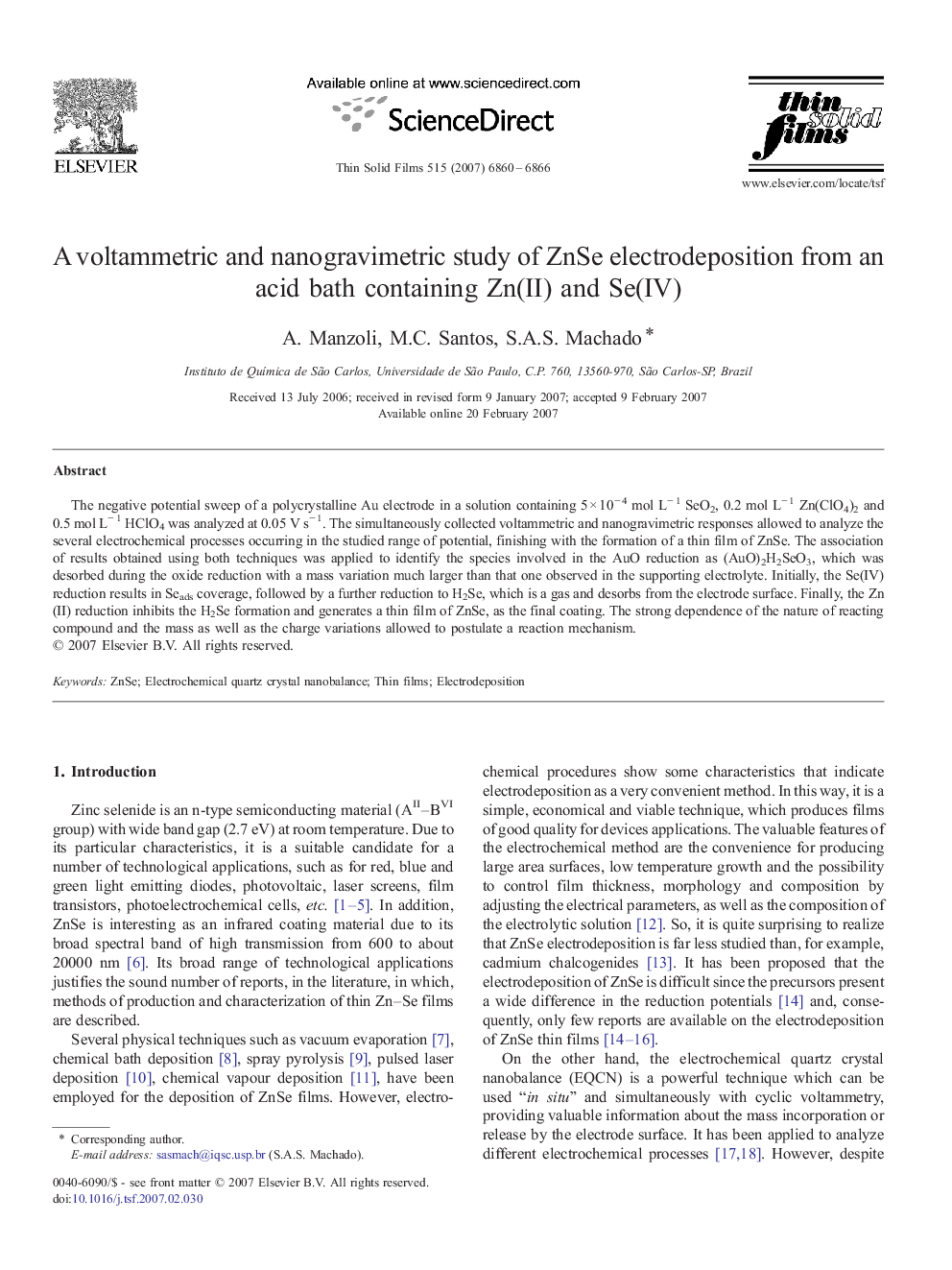| Article ID | Journal | Published Year | Pages | File Type |
|---|---|---|---|---|
| 1675197 | Thin Solid Films | 2007 | 7 Pages |
The negative potential sweep of a polycrystalline Au electrode in a solution containing 5 × 10− 4 mol L− 1 SeO2, 0.2 mol L− 1 Zn(ClO4)2 and 0.5 mol L− 1 HClO4 was analyzed at 0.05 V s− 1. The simultaneously collected voltammetric and nanogravimetric responses allowed to analyze the several electrochemical processes occurring in the studied range of potential, finishing with the formation of a thin film of ZnSe. The association of results obtained using both techniques was applied to identify the species involved in the AuO reduction as (AuO)2H2SeO3, which was desorbed during the oxide reduction with a mass variation much larger than that one observed in the supporting electrolyte. Initially, the Se(IV) reduction results in Seads coverage, followed by a further reduction to H2Se, which is a gas and desorbs from the electrode surface. Finally, the Zn(II) reduction inhibits the H2Se formation and generates a thin film of ZnSe, as the final coating. The strong dependence of the nature of reacting compound and the mass as well as the charge variations allowed to postulate a reaction mechanism.
